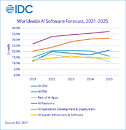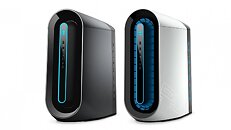
CAMM to Replace the Decades-old SO-DIMM Laptop Memory, JEDEC and Dell Argue
Laptop memory has been a controversial topic for many years. Its proprietary standard, SO-DIMM, has shown signs of aging as the decades-old JEDEC standard didn't adapt to other expanding capacities and speed trends. Today, JEDEC and Dell think that the future of laptop memory is in the new CAMM standard that both companies are working on. The introduction of CAMM comes from Dell, whose Senior Distinguished Engineer Tom Schnell is working on it. "We have unanimous approval of the 0.5 spec," said Mr. Schnell for PCWorld. One of the problems that SO-DIMM is facing is the capacity and speed issue, where the current DDR5 SO-DIMM memory stops at around 6400 MT/s. CAMM, on the other hand, starts from that speed and works its way up to offer higher capacities as well.
With Dell introducing CAMM in its laptops, it had no intentions of creating a proprietary solution but rather an expandable and upgradable memory platform with various benefits. With JEDEC's involvement in finalizing this, the CAMM standard is slowly on its way to becoming a viable option for different laptop manufacturers. Dell's Tom Schnell didn't reveal what companies are in the process of creating the final specification; however, we know that 32 of them are present, including Apple. If others join, the standard could take over future laptop designs and offer higher speeds and higher capacities, especially in the mobile workstation space where it matters. Below is an example of a CAMM memory module with a patent showing the SO-DIMM (upper left) versus CAMM (lower right) and CAMM's smaller trace path. With smaller tracing, the latency is also going down, so the new standard will bring additional efficiency. Additionally, devices that are based on LPDDR memory could have an upgrade path with the installment of CAMM.
With Dell introducing CAMM in its laptops, it had no intentions of creating a proprietary solution but rather an expandable and upgradable memory platform with various benefits. With JEDEC's involvement in finalizing this, the CAMM standard is slowly on its way to becoming a viable option for different laptop manufacturers. Dell's Tom Schnell didn't reveal what companies are in the process of creating the final specification; however, we know that 32 of them are present, including Apple. If others join, the standard could take over future laptop designs and offer higher speeds and higher capacities, especially in the mobile workstation space where it matters. Below is an example of a CAMM memory module with a patent showing the SO-DIMM (upper left) versus CAMM (lower right) and CAMM's smaller trace path. With smaller tracing, the latency is also going down, so the new standard will bring additional efficiency. Additionally, devices that are based on LPDDR memory could have an upgrade path with the installment of CAMM.




































































